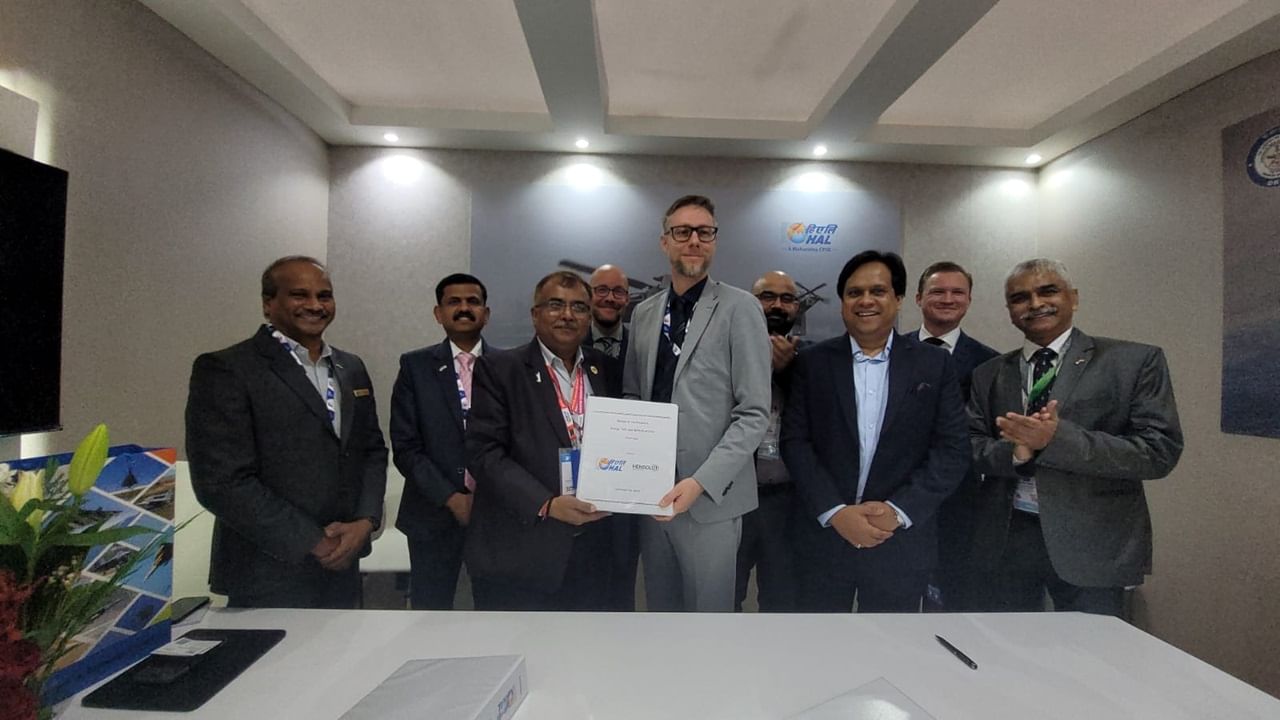New Delhi: India is set to acquire sovereign helicopter-safety technology after the country’s leading aerospace and defence company, Hindustan Aeronautics Limited (HAL), signed a far-reaching transfer-of-technology agreement with a German government-backed firm at the Dubai Airshow 2025.
The deal gives India access to a LiDAR-based Obstacle Avoidance System (OAS), positioning the country among a small group of nations with domestic ownership of such advanced sensor capability.
The agreement HAL inked with Taufkirchen-based HENSOLDT includes design and manufacturing intellectual property rights (IPRs), local production, integration and full sustainment within India. HAL will also receive export rights, enabling it to market the OAS to global helicopter customers for the first time. Choppers that HAL manufactures for the Indian military, such as Light Combat Helicopter (LCH) and the Advanced Light Helicopter (ALH) are likely to be the first to be equipped with the high-tech system.
The LiDAR-based OAS combines a laser-based SferiSense sensor head with a Degraded Visual Environment (DVE) computer that generates synthetic vision and 3D conformal guidance cues. The system is designed to enhance pilot awareness in low-visibility operations — including mountainous terrain, desert “brownout”, snow “whiteout”, and night missions — while reducing the risk of controlled flight into terrain.
The LiDAR technology, based on a patented fibre-scanning mechanism, offers a detection probability of at least 99.5 per cent within the first second, and can identify obstacles such as power lines and cables at ranges above one kilometre. Such capabilities are usually restricted by export controls, and are fielded by only a few countries with long-standing aerospace sensor ecosystems.
For India, the deal offers both operational and industrial gains. HAL will oversee manufacturing, integration and after-sales support, enabling the company to build a domestic supply chain around high-end optronics and mission-system software. The transfer of algorithmic know-how, which is typically the most tightly held element of LiDAR systems, is expected to give HAL deeper competence in sensor data processing and synthetic vision computing.
India’s armed forces have long sought more advanced cueing aids for low-level flight, particularly in regions such as Ladakh, the Northeast and the Western Himalayas, where civilian and military helicopter operations face frequent visibility challenges. A modern OAS is seen as critical to reducing the risk of wire strikes and terrain accidents, one of the leading causes of global helicopter losses.
The agreement also marks a rare instance of a foreign defence manufacturer granting India full export rights for a high-technology avionics system. HAL is expected to pursue markets in Asia, Africa and Latin America, where a number of militaries operate legacy helicopters with limited obstacle-detection capabilities.
The inclusion of design IPR and export permissions rather than assembly-level transfer contrasts with previous defence-industrial arrangements.
The collaboration strengthens New Delhi’s ambitions under the “Make in India” and “Aatmanirbhar Bharat” industrial frameworks.
As India prepares to integrate the OAS across its helicopter fleet, the agreement emerges as a long-term capability investment rather than a single-supply contract. The deal gives the country access to a technology that remains, for now, mastered by only a small circle of advanced aerospace economies — and brings India into that group.
